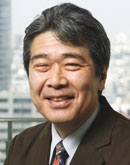
Kazuya Kobayashi Chuo University, Tokyo, Japan
Kazuya Kobayashi received his B.S., M.S., and Ph.D. degrees, all in electrical engineering, from Waseda University, Tokyo, Japan in 1977, 1979, and 1982, respectively. In 1982, he joined the Department of Electrical, Electronic, and Communication Engineering, Chuo University, Tokyo, Japan, where he has been a Professor since 1995. He held central management positions at Chuo University, including Vice-President (2006-2008), Director of the International Center (2003-2006), and Secretary to President (2001-2003).
Dr. Kobayashi was Visiting Associate Professor at University of Wisconsin-Madison, Madison, Wisconsin, USA (1987-1988), and Visiting Professor at various institutions including Institute of Radiophysics and Electronics of the National Academy of Sciences of Ukraine, Kharkov, Ukraine (2001), Karpenko Physico-Mechanical Institute of the National Academy of Sciences of Ukraine, Lvov, Ukraine (2001), Macquarie University, Sydney, Australia (2014), and Physical Research Laboratory, Ahmedabad, India (2015). He has been Adjunct Professor at The Electromagnetics Academy at Zhejiang University, Hangzhou, China since 2004.
Dr. Kobayashi received several awards including V. G. Sologub Prize (equivalent to Best Paper Award) at the “1998 International Conference on Mathematical Methods in Electromagnetic Theory” (MMET 1998) held in Kharkov, Ukraine in 1998.
Dr. Kobayashi is a Member of the Science Council of Japan of the Cabinet Office, Government of Japan and a Fellow of The Electromagnetics Academy, USA. He has held several URSI (International Union of Radio Science) positions including Assistant Secretary-General (since 2015), Vice-Chair of Commission B (since 2014), President of the Japan National Committee of URSI (since 2008), and Chair of the AP-RASC Standing Committee (since 2015). His research area includes, developments of rigorous mathematical techniques as applied to electromagnetic wave problems, integral equations, boundary value problems, special functions, radar cross section, and scattering and diffraction.
